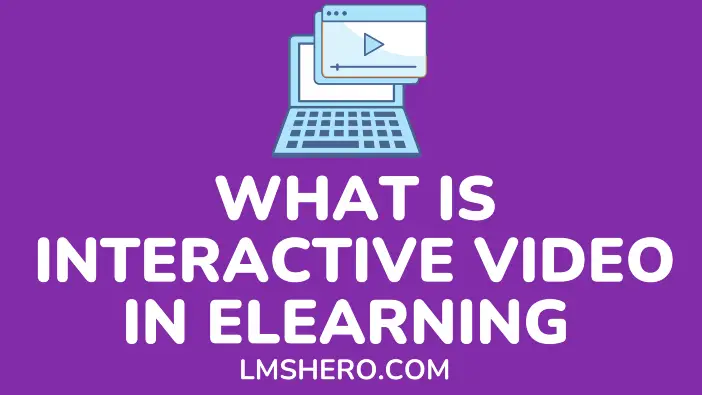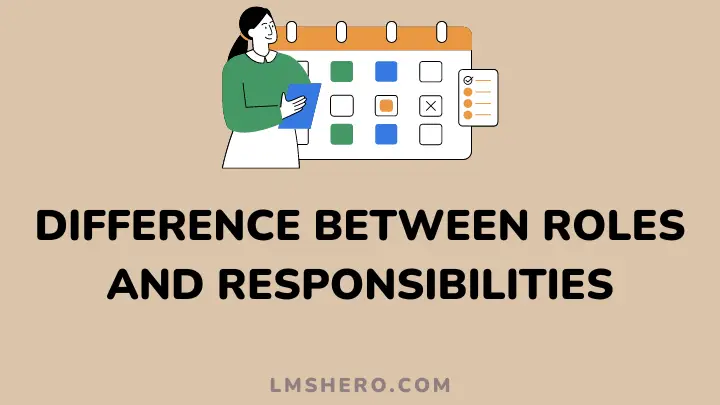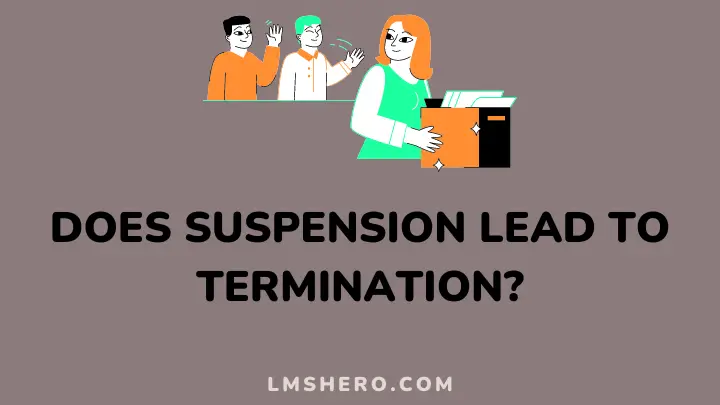The introduction of interactive videos in e-learning has made online learning more engaging, popular, and immersive for learners. Hence the need to understand what interactive video in e-learning is all about.
The concept of e-learning is seen as a major development in education. However, before the introduction of interactive videos in e-learning, learners only had the ability to rewind, fast-forward, pause or replay videos. This made learning boring and stereotyped and learners quickly lost interest.
As a solution to poor learners’ engagement, short attention spans, and low retention from e-learning, interactive videos were developed to make e-learning engaging, enjoyable, and personalized for learners.
Let’s discuss in detail the concept of interactive video, its elements, and its benefits in this article.
Ready?
What Is Interactive Video
These are videos that enable active participation in learning through interactive elements like branching, hotspots, quizzes, etc.
It allows learners to have major control over their online video courses and fosters an immersive learning process. Also, interactive videos are responsive and personalized to suit individual online learners.
Traditional or linear video learning only allows learners to be able to play, pause, rewind, fast-forward, and restart online videos which are in no way engaging or interactive.
On the other hand, interactive video in e-learning transforms the online learning process. It fosters a two-way video interface by presenting learners with options like drag and drop, links click, elaborating texts, and data input, all in a bid to make e-learning genuinely interactive.
What Are The Elements of Interactive Video?
What makes a video interactive is the addition of multiple immersive elements that foster active participation in learning. They include:
1. Hotspots
Hotspots are the clickable portions within a video while the video plays. Each hotspot has specific instructions that include directing learners to a new web page or showing contents that are embedded directly in the video.
Through hotspots, learners can drive their learning in ways they desire by clicking links to actions they deem fit.
2. Branching
Branches help learners personalize the content they see. Unlike linear videos, which follows a single path, branching presents learners with a variety of content paths for different level or types of learners.
Therefore, through branching learners can focus on lessons they are interested in or that are helpful to them based on their situation.
3. Drag and Drop Feature
This is an easy-to-use tool that online tutoring platforms provide to online tutors to enhance interactive videos. It gives learners the option of dragging videos, texts, images, etc. They can also be used for quizzes, scenario-based questions, etc.
4. Quizzes
The interactive video incorporates quizzes as a way of assessing learners. The traditional video approach involves bombarding learners with a series of questions after completing the whole course.
The interactive video involves conducting testing in bites. Quizzes may be one, two, or multiple set questions. Moreover, these questions could be in drag and drop form, mark the word, fill in the gap, or any other means.
As a result, learners easily retain what they learn and stay more engaged through every step.
In addition to quizzes, the feedback feature also helps learners to determine how much they understand a topic and how best to approach those questions in the future.
5. Image Zoom
The interactive video features image zoom-in videos. Online courses use images to explain concepts in videos. This video may not be clear. But the image zoom options allow learners to be able to capture images in bigger sizes to check important details of the image.
In addition, learners can have a 360 view of images by zooming in on images to see all directions.
6. Summary
A summary is also used as an interactive element in e-learning. It could be displayed as a hotspot or at the end of a topic to help learners capture lessons in a shorter context.
This feature allows learners to be able to preview video content and retain better what they have learned.
Benefits Of Interactive Video In Elearning
Interactive video is regarded as a breakthrough in the process of online education. There have been debates as to the effectiveness of online learning, but with interactive videos, e-learning has been taken steps higher.
To this end, there are a lot of benefits that accompany interactive videos in e-learning. Let’s explore each benefit.
1. Foster Learner’s Engagement
The key benefit of interactive videos in e-learning is the ability to drive learners’ engagement. Before the conception of interactive videos, it was difficult for learners to pay diligent attention to online courses.
Social media, and internet activities among others are competing for the attention of online learners, as such, there was a need to create a learning experience that could hold readers’ attention through user engagement.
Through interactive video and its elements, learners are actively involved in the learning process, resulting in a better online learning experience which linear video could not achieve.
2. Improve Retention
Another obvious benefit of interactive videos is the fact that learners are able to retain what they have learned better. This is because learners are engaged in the learning process and they can interact with online videos.
Furthermore, since users can personalize their online learning to suit their needs through interactive video, they are able to learn in the best way possible. Also, the use of frequent quizzes, feedback, and summaries helps learners retain easily the content of online courses.
3. Fun And Ease In Learning
The immersive features of online learning make it fun and easy for users. Unlike traditional videos in e-learning, interactive videos provide different learning pathways that learners can follow based on their interests.
In addition, courses are broken down into bits making them less cumbersome and easy to grasp. The use of hotspots and branching gamifies online learning. That is videos that are responsive to learners’ actions, not the other way around.
4. Track Learner’s Activities
Interactive Video Feature has afforded online learning platforms the opportunity to track the actions of learners while watching the video. From link clicks within the video to branching, to the data entry form field, course creators can gather online video metrics to know if their effort is in the right direction.
Moreso, the gathered data is useful for making video content more helpful and user-centric. Through the data gathered, online course creators can focus more on the positives to improve on it and work to mitigate the negatives.
5. Improves Learning Speed
Online learning in itself allows learners to learn at their best time, whether during the day or at night. In the same vein, through branching interactive videos are more personalized thereby giving individual learners the best learning experience.
As a result, learning becomes easy and learners can learn at a higher speed compared to classroom learning or linear video that doesn’t engage learners.
In addition to that, learners have the opportunity to skip lessons that do not interest them. Also, they can avoid lessons that they probably know much about and focus on more important ones.
6. Flexibility In Learning Style
A major problem of online learning has been non-flexibility in the learning style. That is to say, teachers have more control over how lessons should go and every individual has to succumb to the lesson pattern of the teacher.
Through interactive videos, learners have more control over how their lesson should go. In other words, learners can choose how they want their lesson to go depending on how they feel.
As a result, learning becomes more appealing and less pushy, and different types of learners can learn the way they desire.
How To Make Interactive Videos More Effective In Elearning
As said, interactive video elements are powerful enough to make learning much more engaging. However, developing content with the audience in mind is important to drive more engagement and improve the learning experience for learners.
Apart from the features or elements that come with most interactive videos, tutors should incorporate some of these things in their content.
1. Use Of Stories
Stories are instrumental in grabbing and sustaining listeners’ attention. Presenting interactive videos in a story-like manner not only holds listeners’ attention but also helps learners to remember all that they have been taught with ease.
In addition, stories make learning more fun for learners. Rather than taking a formal approach to presenting lessons, online course creators can increase interest in learning by using storytelling to explain concepts.
Stories can be done by using dialog between characters that are relevant to the topic being taught. In the end, you can ask students to state the morals from stories and relate them to the topic under study.
2. Games-like Learning
Games are appealing and fun to play, particularly for millennials. Therefore, integrating game-like tools like points, levels, badges, and leadership boards, can drastically improve the learning experience for learners.
Games-like tools are effective in making learners see their progress as points or in levels while they study. Furthermore, upon successful completion of a lesson or set of lessons, present badges to encourage them for a job well done.
Also, the leadership board makes learning competitive for learners since it involves other players or multi-player which is an interesting option for gamers.
The linear video lacks the element of competition. But with the introduction of the leaderboard in interactive videos, learners will dedicate more attention to their lessons. In the same vein, they will want to pass quizzes better and come out as top in the leadership board.
3. Simulations And Scenarios
Simulations and scenarios are effective interactive tools that paint real-life situations so that learners can proffer solutions to them.
This could come in form of questions or quizzes after lessons. Learners can then answer using drag-and-drop features to give a step-by-step approach to how they will handle the situations, or by marking the right actions to take in those types of scenarios.
Simulations and scenarios are excellent tools for making e-learning more hands-on. Also, students can retain knowledge and understand better since lessons are related to real-life cases.
Lastly, it aids critical thinking in learners because they have to be thoughtful in choosing their answers.
4. Feedback Feature
Learners want to experience two-way communication while they learn. An effective solution to this is the use of immediate feedback after the quiz, or as a hotspot after clicking links.
This helps users to be more engaged in the learning process. Linear videos are robotic and lack engagement, making learners lose interest easily.
Through immediate feedback, e-learning becomes more engaging, personal, and effective to learners. For instance, feedback may help point out learners’ errors and explain the correct course of action, congratulate them for a job well done, state what learners can do better, etc.
FAQs
What makes a video interactive?
Interactive videos allow users to engage with the video content at several points of learning using interactive tools like hotspots, branching, etc.
Why is interactive video important?
The interactive video keeps readers engaged and improves learners’ retention by allowing users to take major decisions regarding their learning experience.
What are the elements of interactive videos?
Elements of the interactive video include hotspots, branching, image zoom, quizzes, etc.
How can you improve interactive video?
You can improve interactive videos by using stories, simulations and scenarios, game-like learning, and feedback features.
Summary
In this article, we have carefully examined what interactive videos are, their elements, benefits, and ways to improve video interaction.
Learners want active involvement in the learning process and traditional video in e-learning has not been of much help.
As such, interactive videos came as a solution to give learners control over video content. This has tremendously improved the online learning experience for audiences. Learners can now engage with video content through interactive video elements and get to personalize their learning.
Furthermore, tutors can improve their interactive videos by incorporating stories, feedback, simulations, and the likes as part of the video content.
Finally, apart from interactive video, another mechanism that has been effective in driving a better online learning experience is microlearning which involves delivering lessons in bits. You can check the post on microlearning to learn more.
I hope this article helped. Thanks for reading.







